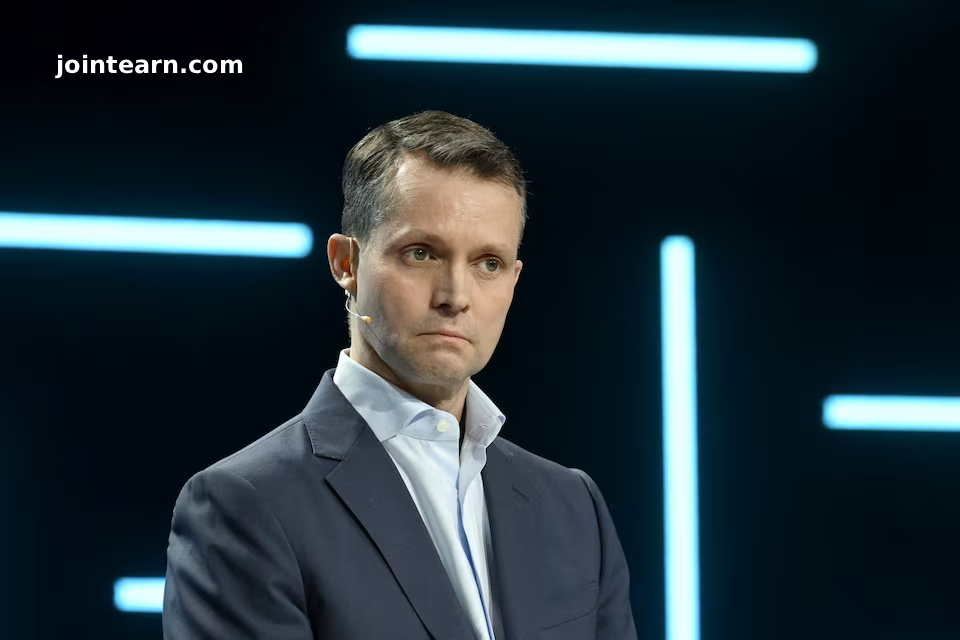
Nokia CEO Says AI Marks the Start of a Global Supercycle
ESPOO, Finland, October 23, 2025 — Nokia CEO Justin Hotard believes the ongoing surge in artificial intelligence investment marks the beginning of a long-term “AI supercycle” comparable to the internet revolution of the 1990s.
In an interview with Reuters, Hotard said that while some investors are concerned about overheating in AI markets, he views the trend as structural rather than speculative, suggesting sustained growth ahead for data infrastructure and telecommunications technology.
“I fundamentally think we’re at the front end of an AI supercycle, much like the 1990s with the internet,” Hotard said. “Even if there’s a bubble or a correction, the long-term trends are overwhelmingly favorable.”
Nokia’s AI Pivot and Earnings Momentum
The Finnish telecom giant’s third-quarter results beat market expectations, driven by surging demand for optical networking and cloud-based infrastructure.
According to Nokia, AI and cloud customers accounted for around 6% of quarterly sales, underscoring the rapid growth of data center and AI networking segments.
Hotard credited Nokia’s recent acquisition of U.S.-based Infinera, a leader in optical networking, for strengthening its footprint in the AI infrastructure market.
“We’re seeing demand from both hyperscale tech companies and smaller European data center players,” Hotard noted. “The incremental growth investment is clearly being driven by data centers — it’s a massive step up in volume.”
Industry Debate: AI Boom or Bubble?
While enthusiasm for AI continues to dominate markets, not everyone is convinced of its sustainability. A Bank of America survey earlier this month found that over half of global fund managers view AI-related stocks as being in a bubble.
Prominent figures such as Amazon founder Jeff Bezos and OpenAI CEO Sam Altman have warned that overexuberant speculation could lead to a painful correction.
Still, Hotard downplayed these risks, emphasizing that Nokia’s AI strategy is anchored in tangible infrastructure demand, not hype.
“Our focus is on enabling the backbone of AI — data networks, optical connectivity, and cloud infrastructure,” he said. “These are real, enduring needs that will support the AI economy for years to come.”
Nokia’s Transformation: From Phones to AI Networks
Since selling its iconic mobile phone business in 2013, Nokia has reinvented itself as a networking and cloud infrastructure leader.
Under Hotard’s leadership — and following his experience heading Intel’s Data Center and AI group — Nokia is now embedding AI technologies across its radio, fiber, and core network products.
In September 2025, the company created a new Technology and AI Division led by Chief Technology Officer Pallavi Mahajan, another former Intel executive, to accelerate innovation in AI-driven network automation and machine learning optimization.
These strategic shifts represent Nokia’s most ambitious transformation in over a decade, positioning the company at the center of global efforts to modernize digital infrastructure for AI-driven workloads.
The Bigger Picture: AI Infrastructure Powers Global Growth
The AI revolution is reshaping the global economy, with corporations racing to expand data center capacity, upgrade fiber networks, and integrate AI into every layer of technology infrastructure.
For Nokia, this presents a once-in-a-generation opportunity to capitalize on the convergence of telecommunications, cloud computing, and AI ecosystems — a convergence that mirrors the internet buildout of the 1990s.
“This is the next great wave of connectivity,” Hotard said. “Nokia’s role is to provide the infrastructure foundation that makes AI accessible, scalable, and efficient.”
Key Takeaways
- Nokia CEO Justin Hotard likens today’s AI boom to the 1990s internet era, but dismisses fears of a speculative bubble.
- Nokia’s AI and cloud customer base contributed 6% of quarterly revenue, with data center demand fueling growth.
- The company’s Infinera acquisition strengthens its optical and cloud networking capabilities.
- Nokia’s new AI division aims to accelerate adoption of machine learning in telecom infrastructure.
- Despite bubble warnings from industry leaders, Nokia sees long-term, infrastructure-driven AI growth as sustainable.


Leave a Reply